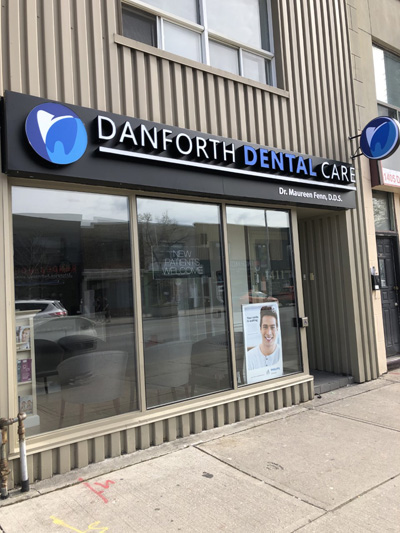Types of Gum Disease Treatments at our Toronto Dental Clinic
Suffering from infected gums? It might be time for one of these procedures with our Danforth dentist.
When a person neglects properly cleaning their teeth and gums daily, gum disease can quickly set in. Gum disease is caused by the harmful bacteria found in plaque. Over time, as this plaque hardens and accumulates with poor oral hygiene habits, the gum line becomes inflamed.
The first and most common sign of gum disease is experiencing gums that bleed with cleaning.
This typically indicates that the person has gingivitis. The gums should not bleed with normal brushing or flossing if they are in a healthy state – and if they do, this means they are infected. Luckily, this stage is reversible with an adjustment to one’s daily oral hygiene routine.
Alternatively, gums that are considerably tender and puffy in appearance, as well as red or purplish in colour, are most likely suffering from periodontitis.
Periodontitis is the most severe stage of gum disease. Periodontitis includes loss of gum health and loss of bone around the teeth. Severe periodontitis can cause significant bleeding, tooth loss and infection throughout the body. This stage is not reversible, but can be treated to prevent the problem from worsening.
Depending on the severity of a person’s gum disease, the following periodontal treatments are performed in order to restore the gingiva back to a healthy state:
Non-surgical treatment: Scaling and root planing
During a deep professional cleaning, the dental professional will perform two things known as scaling and root planning.
With scaling, the hygienist uses a special handheld tool to remove the hardened deposits of plaque and tartar on the teeth above and below the gum line. They will typically begin by using an ultrasonic scaling tool to remove the bacteria using sonic vibrations, and will then use a manual tool to remove any bacteria that were left behind.
With root planing, the hygienist scales and smoothes the root surfaces of the teeth, which is necessary in order to resolve the gum tissue inflammation that occurs with gum disease. This gives the patient another chance to keep the area clean and free of harmful plaque and tartar.
Pocket reduction surgery
In more advanced stages of periodontitis, the gum tissue may reject fitting snugly around the teeth, despite any professional deep cleaning efforts via scaling and planing. This is likely due to the longer-term consequences of periodontal disease, such as receded gums and loose teeth.
A periodontal pocket reduction procedure, or flap surgery, involves folding back gum tissue in order to clean out any infectious bacteria while also smoothening any areas of damaged bone. The ultimate goal of a pocket reduction procedure is to promote reattachment of the gums to healthy bone, thus reducing the pocketing between them.
Gum grafting surgery
Since gum disease leads to gum recession, this can cause the roots of the teeth to become exposed in severe cases. The good news is, a gum grafting procedure can restore the lost tissue back to these areas, protecting and covering the roots of the teeth back up. The tissue is harvested from another area of the patient’s mouth.
The ultimate goal of gum grafting surgery is to prevent further gum recession and bone damage, decrease root sensitivity, and protect the exposed roots of the teeth from decay.
Laser therapy
A more modern approach to periodontal treatment, laser therapy involves using a precise laser to accurately target the areas of disease. Since this method of gum treatment is non-invasive, this ensures a speedier recovery time and fewer potential risks or side effects.
How long has it been since you’ve had your gums (and teeth) assessed by a professional?
If it’s been longer than six to nine months, it’s time to book your next visit. Schedule your appointment with our team of smile experts in Toronto today!


We are conveniently located near Greektown on the TTC Danforth Avenue subway line between Greenwood Avenue and Coxwell Avenue.
1411 Danforth Avenue, Toronto, ON M4J 1N2